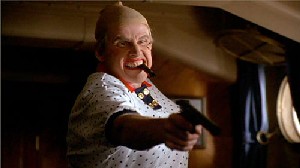The front spindle gets a rub of 1200 grit to polish it up.....

then the rear dust cap gets popped on.....


followed by the backing plate......


and next up is the wheel bearing. As is well documented around the
interweb by now the E28 wheel bearings and e30 M3 bearing are the one
and the same unit, only difference being different ABS rings and a big
difference in price. So, pair of E28 bearings.......

pull the Abs rings off.....

and then pull the rings off the old M3 bearings.......

These were seriously tight and I had to rely on the age old
3 stage method to remove them.
Step 1......

Step 2......

Step 3.....

bingo.....

Rings get a clean up and a little loctite on the inside lip for refitment....


and when securely back in place a lick of silver paint to protect the
bare metal.....

And then drop the whole lot back on to the spindle. Unlike the rear bearings
the front ones aren't usually tight going back on and don't require a press.
A few gentle tips with something soft and they should slide down into place.....



then the rear dust cap gets popped on.....


followed by the backing plate......


and next up is the wheel bearing. As is well documented around the
interweb by now the E28 wheel bearings and e30 M3 bearing are the one
and the same unit, only difference being different ABS rings and a big
difference in price. So, pair of E28 bearings.......

pull the Abs rings off.....

and then pull the rings off the old M3 bearings.......

These were seriously tight and I had to rely on the age old
3 stage method to remove them.
Step 1......

Step 2......

Step 3.....

bingo.....

Rings get a clean up and a little loctite on the inside lip for refitment....


and when securely back in place a lick of silver paint to protect the
bare metal.....

And then drop the whole lot back on to the spindle. Unlike the rear bearings
the front ones aren't usually tight going back on and don't require a press.
A few gentle tips with something soft and they should slide down into place.....





























































































Comment